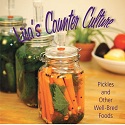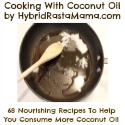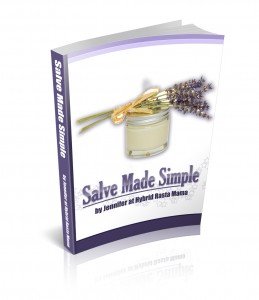Fermentation Friday, September 21
Watermelon Juice, Salsa and Water Kefir all fermenting in Pickl-it Jars.
When it comes to fermenting, people who are contemplating the Pickl-it jars keep asking me one questing. “What do I need to buy to get started?” I have been giving that some thought. It will of course depend on how many people you are planning to be making ferments for and how much each person will eat. It also depends on what you are planning to ferment. Some fermented foods take a long time and need a dedicated Pickl-it jar that whole time. Other foods are ready quickly and can be eaten up quickly and free up the jar again for more food. One third issue to keep in mind is that as a food is eaten it will need to be moved into a smaller jar once the jar it is in is half full or less.
So foods like pickles, water kefir, milk kefir, and salsa are made quickly and eaten quickly. I have a dedicated jar for my water kefir. While that jar is always in use I don’t need multiple jars in order to keep my family drinking kefir all the time. Salsa and other fruit ferments can be made in small batches that should be eaten within a week or two making them and you can rotate through different recipes in the same jar. If you want to preserve fermented fruits longer you will need to freeze or dehydrate them. Keeping them in a Pickl-it long term will lead to over fermented foods with a high alcohol content and not so pleasant a taste. I just had this happen to some sweet pickles that I wasn’t eating up fast enough. Very disappointing to say the least. Anything with a high sugar content will not keep long term in a Pickl-it jar.
Other foods like sauerkraut and garlic will need to be in a Pickl-it for a long time before you can even begin to eat them. Garlic can be eaten after a month but the spice won’t mellow till it is 6 months old in most cases. Sauerkraut needs to go at least 10 weeks before it is eaten and needs to be in a jar with an air lock till it is 5 months old (if it lasts that long without being eaten). So having multiple jars with sauerkraut in them is key to being able to have sauerkraut all the time. It will keep much longer than 5 months however so you could move it to an airtight jar without an air lock after 5 months is up. I like to make it in the 3L jar since that fits into my fridge the best but in general I think the bigger the better for making kraut since it needs to age for so long and my family can consume it in large quantities at once.
I have 9 Pickl-it jars right now and I have rounded out my collection with someFido Jars so that I can have a variety of jar bottom sizes to choose from (the lids are all the same size and can be switched from jar to jar easily). That was more than enough for my first few months of fermenting but now that I am wanting to preserve lots of kraut this winter I am in need of more jars. Plus I have gone ahead and given over a jar to fermenting some garlic long term and I am contemplating starting to ferment some hot peppers. Those take 1.5 years to be done. I’ll let you know some time in 2014 how it is.
The bottom line is that you will need to consider what you are hoping to be making and then figure out from there what sizes and how many you will need. If you are wanting to convert what you are already making it may help to know that 1 liter is approximately the same as 1 qt. Don’t forget that you will need to leave some head space in the jars to prevent them sending your ferment liquid out through the air lock. The bundles that Pickl-it offers are often a good deal. If you have any local friends who might be interested you really should do an order together since the shipping rates are so high and bigger orders cost less per jar to ship.
I hope that this helps you to choose the right jars to get started using the Pickl-it jars for fermenting your foods.
In other fermenting news around the web
This week Melanie from Pickle Me Too shares her recipe for Fermented Spaghetti Sauce. Be sure to try this ferment while tomatoes are at their best.

Melanie also shares her thoughts on fermenting in Fido jars in this post: Fermenting in a Fido?

And Lydia at Divine health has a fantastic looking recipe for Smoky Peach Salsa

What are you fermenting this week? Leave that in the comments below.
Also please join us over on Facebook in the Anaerobic Fermentation Group to discuss the details of anaerobic fermentation in Pickl-it jars and German style crocks (like the Harsch Fermenting Crock Pot)
Many of my blog posts contain affiliate links. Purchasing through an affiliate link allows me to keep blogging and sharing what I learn with you. It is a bit like leaving a tip for service and is very much appreciated. Thank You! -PattyLA




















Question…I’m wondering why the food needs to be moved to a smaller jar once the jar is less than 1/2 full?
Every time you open the jar you are letting in some oxygen. The LAB’s that tolerate oxygen can quickly eat up that oxygen and return your jar to an anaerobic state (this is after the active stage of fermentation is over and lots of co2 is no longer being created to push o2 out the air lock). If you have too big a space in the jar however the LAB’s won’t eat up the O2 fast enough and it can harm the LAB’s that don’t like O2. I have seen the results of not keeping the jar full enough. I had some salsa (in the photo at the top of the page!) and it got to be just 1/4 full in the jar and I did not move it. I opened it one day and it was covered in mold. Mold is only possible in the presence of oxygen.
Mold is only possible in the presence of oxygen.
great post, but i’m unclear on something. Are you saying that you make water kefir in a regular mason jar and not in a pickl-it? or did i misunderstand?
thanks susan
I make my water kefir in a pickl-it. In fact you can see it at the top of the page. It is the dark jar on the right of the photo.
OK, thanks for clarifying!
Patty, do have to store your food in the pickl-it jar? It seems you’d have to have a lot of jars if you need to keep the food oxygen-free during storage. I’d like to move it to a regular mason jar after fermentation.
Once the jar is no longer bubbling you can store it in a fido jar. That comes at different times for different ferments. Storing in a mason jar will introduce oxygen and kill off the LAB’s that you have worked so hard to cultivate. If you are planning to go ahead and eat up your ferments then you don’t need that many jars. And quite a few ferments can be eaten pretty soon after making them. It is just some special ferments, and sauerkraut that increase your need for jars. Kraut just because it takes so long to ferment, although a friend recently figured out that if she makes kraut in 5L pickl-it‘s she can eat nearly 1L a week and just have 2 jars and stay in kraut all the time.
I use Pickl-it Jars too and always transfer them to Mason Jars so I can use my jars to ferment something else. You’re saying that the fact that the mason jar is not airtight makes it pretty much useless to consume for health benefits? I assumed that when it was done fermenting, it didn’t need to continue to be airtight. While the Fido is airtight, you’re still opening it to consume the product, so how it that all that different? Ugh. Please give me hope!
Hi Beth,
Unfortunately mason jars are not airtight so moving your ferments to mason jars will allow oxygen into the jar and that oxygen will kill off many of the beneficial microbes and may allow mold to begin to grow. I move ferments to fido jars while I am eating them but keep them in a jar with an airlock if they are in storage.
what are fido jars?
Here is my amazon affiliate link to some
Bormioli Rocco Fido 3-Piece Set
Thanks Patty!
Are picklit jars really useful when it comes to some of the simpler ferments? Sauerkraut can be made within a week if your house stays at a reasonable temp, and then it can be moved to the fridge. Why keep it in a picklit for weeks?
Because after a week Sauerkraut is just getting started. It takes 10-12 weeks for it to get to the final stage and not be full of histamines and other toxins. Just because it tastes sour does not mean that it is finished sauerkraut. Of course if you are making it in an open jar then you won’t ever get rid of the histamines or form enzymes since those processes need to be anaerobic. (no oxygen in the jar at all, not just under the brine). Perhaps you should read about my families experience in switching from “mason jar ferments” to using the pickl-it jar for everything. http://www.lovingourguts.com/anaerobic-fermentation-our-gaps-missing-piece/
Hi Patty,
We were in touch via FB message, and I was perusing your blog tonight and thought that if I leave a comment here, maybe your blog will notify you and you’ll see my comment on this old post! I am thinking more about Pickl-It jars tonight and find this post very helpful. I was reading also about how you make your kraut, and I’m wondering two things: is a mandolin absolutely necessary for making sauerkraut? Also, you measure the amount of salt precisely using a kitchen scale. I don’t have a scale - do I really need to purchase one to be sure that I’m getting the proportions right?
Thanks!
Hi Meredith,
Yes I see these comments.
No a mandolin is not absolutely necessary but it will make getting the kraut nice and thin much, much easier. A scale however is necessary. I don’t know any other way to get the salt right.